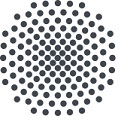Bitte benutzen Sie diese Kennung, um auf die Ressource zu verweisen:
http://dx.doi.org/10.18419/opus-11395
Langanzeige der Metadaten
| DC Element | Wert | Sprache |
|---|---|---|
| dc.contributor.author | Huber, Liam | - |
| dc.contributor.author | Hadian, Raheleh | - |
| dc.contributor.author | Grabowski, Blazej | - |
| dc.contributor.author | Neugebauer, Jörg | - |
| dc.date.accessioned | 2021-04-07T10:28:45Z | - |
| dc.date.available | 2021-04-07T10:28:45Z | - |
| dc.date.issued | 2018 | de |
| dc.identifier.isbn | 2057-3960 | - |
| dc.identifier.other | 1817235303 | - |
| dc.identifier.uri | http://nbn-resolving.de/urn:nbn:de:bsz:93-opus-ds-114127 | de |
| dc.identifier.uri | http://elib.uni-stuttgart.de/handle/11682/11412 | - |
| dc.identifier.uri | http://dx.doi.org/10.18419/opus-11395 | - |
| dc.description.abstract | Even minute amounts of one solute atom per one million bulk atoms may give rise to qualitative changes in the mechanical response and fracture resistance of modern structural materials. These changes are commonly related to enrichment by several orders of magnitude of the solutes at structural defects in the host lattice. The underlying concept - segregation - is thus fundamental in materials science. To include it in modern strategies of materials design, accurate and realistic computational modelling tools are necessary. However, the enormous number of defect configurations as well as sites solutes can occupy requires models which rely on severe approximations. In the present study we combine a high-throughput study containing more than 1 million data points with machine learning to derive a computationally highly efficient framework which opens the opportunity to model this important mechanism on a routine basis. | en |
| dc.language.iso | en | de |
| dc.relation | info:eu-repo/grantAgreement/EC/H2020/639211 | de |
| dc.relation.uri | doi:10.1038/s41524-018-0122-7 | de |
| dc.rights | info:eu-repo/semantics/openAccess | de |
| dc.subject.ddc | 530 | de |
| dc.title | A machine learning approach to model solute grain boundary segregation | en |
| dc.type | article | de |
| ubs.fakultaet | Chemie | de |
| ubs.fakultaet | Fakultätsübergreifend / Sonstige Einrichtung | de |
| ubs.institut | Institut für Materialwissenschaft | de |
| ubs.institut | Fakultätsübergreifend / Sonstige Einrichtung | de |
| ubs.publikation.seiten | 8 | de |
| ubs.publikation.source | npj computational materials, 4 (2018), 64 | de |
| ubs.publikation.typ | Zeitschriftenartikel | de |
| Enthalten in den Sammlungen: | 03 Fakultät Chemie | |
Dateien zu dieser Ressource:
| Datei | Beschreibung | Größe | Format | |
|---|---|---|---|---|
| s41524-018-0122-7.pdf | 1,58 MB | Adobe PDF | Öffnen/Anzeigen |
Alle Ressourcen in diesem Repositorium sind urheberrechtlich geschützt.

